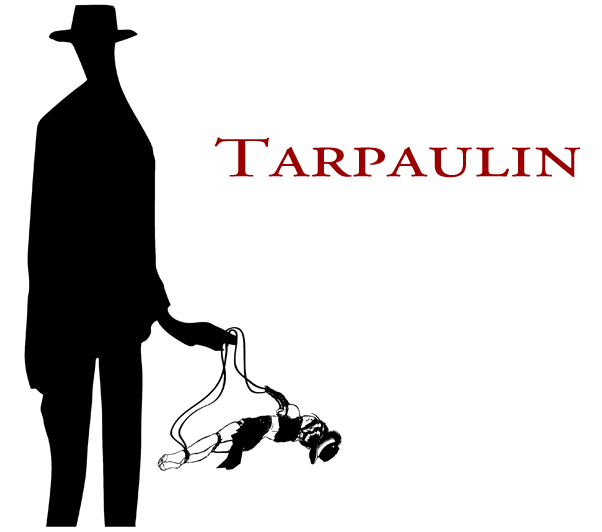There is No Book
‘Welcome Visitor #0134457
Marvin K. Mooney left strict instructions detailing his desired method of organization for what he frequently referred to as his “Complete Works.” (Humility was never one of Mooney’s strong points.) He presumed the popularity of his work would surely grow exponentially following his death.’
Authorship is the heart of Christopher Higgs’ debut novel The Complete Works of Marvin K. Mooney. In its 352 pages, Higgs and Mooney are a tandem of writers working in collaboration to disappear, to relinquish all responsibility to the word, to the title, to the notion of authorship as a whole.
Sator Press, literary newborn from writer / editor / actor Ken Baumann began its walking legs with this first title – but before that there was a simple splash page and a posting on the esteemed htmlgiant simply asking – ‘what is this?’ Months later Marvin K. Mooney began appearing in blog post commentary, enticing writers, readers, and the like to ‘join him’, that they ‘were needed’. The links of these posts led to a Marvin K. Mooney Society webpage (themarvinkmooneysociety.com), which housed very little information but several videos of static laden scenic views or unintelligible groups in seeming prayer or chant. This dialogue opened even further when on the final days before the book’s release many top lit blogs like htmlgiant or bigother were engaged in conversations about the aim or validity of these Marvin K. Mooney publicity stunts. And then, on a day like any other day, the Sator Press website went live and announced The Complete Works of Marvin K. Mooney by Christopher Higgs – the first official mention of his authorship and the release of the title in paperback, audiobook, and ebook formats. All of this, and the book was not even at our doorsteps, was not yet opened to page one, where the destruction of authorship begins in earnest.
‘This is nothing like my real life. I did not base this story on myself or anyone I know. I used something children call imagination. Past the age of eleven, most people don’t have one, so I understand if you’re one of them. But unlike you, I still use mine. Instead of recapping tidbits of my boring real life, like most fuckwads who call themselves writers, I sit and imagine stuff and that’s where the “story” comes from. There is never any truth in anything I type. My name is not Marvin K. Mooney. In real life, my wife is nothing like the man’s wife in this story. My wife and I never visit the cave anymore. To be honest, I haven’t seen my wife in months. Goodbye cavelight.’
The Complete Works of Marvin K. Mooney masquerades as exactly what its title describes, a collected framework to reference a single author: Marvin K. Mooney. Composed of notes from Mooney, blurbs and mentions about him from other writers, last pages and guesswork on his disappearance as well as philosophical statements, cut and past lit theory and recovered or re-published stories from Mooney’s supposed literary career, The Complete Works of Marvin K. Mooney is a book to wade through. By page ten my cuffs were wet, and by the mid-point, my belt was missing underneath a sea of textual scatter.
‘ “Hey, what’s that you’re reading?”
You could answer a number of things, one of them being: “It is a new work of creative nonfiction by Marvin K. Mooney.”
In follow-up, you may be asked:
“What’s it about?”
To which you can safely reply: “It is a text about itself. It is a pretentious, egomaniacal, megalomaniacal, and hardly worth my time; but for some reason I continue to read it – perhaps I am being forced to at gunpoint, perhaps I am slightly enjoying it” ’
And this is what is most fascinating about the book: how it manages to discuss, to live within, and to subvert the notion of meta-fiction, all at once. There are shouted moments to the reader, enticements and goads to us, followed by three-part fictional narratives and prefaced by philosophical interjections and the planting of literary theory seeds. And Higgs, playing at Mooney (and sometimes at himself) does a tremendous job finding the exact moments of lull, of hush, where the text threatens to overwhelm itself and collapse, and uses those exact moments to change the pacing of the text, to break into a new dialogue, or to switch to another mode.
There are places where the wading through of The Complete Works of Marvin K. Mooney is deep or rough or super complex, where it takes something other than a simple read to find Higgs’ meaning and willingly subvert the text alongside Mooney, but in the end, the mud-stuck footsteps through the lake of this book are worth it, every page, to come out with Mooney or Higgs, or without them perhaps, on the other side of literature.
This blog is long dead. Please go to TarpaulinSky.com
Quick jump to TS Press authors: Jenny Boully | Ana Bozicevic | Traci O. Connor | Mark Cunningham | Claire Donato | Danielle Dutton | Sarah Goldstein | Johannes Göransson | Noah Eli Gordon and Joshua Marie Wilkinson | Gordon Massman | Joyelle McSweeney | Joanna Ruocco | Kim Gek Lin Short | Shelly Taylor | Max Winter | david wolach | Andrew Zornoza




